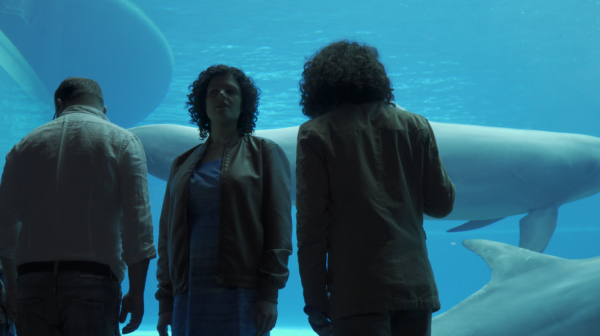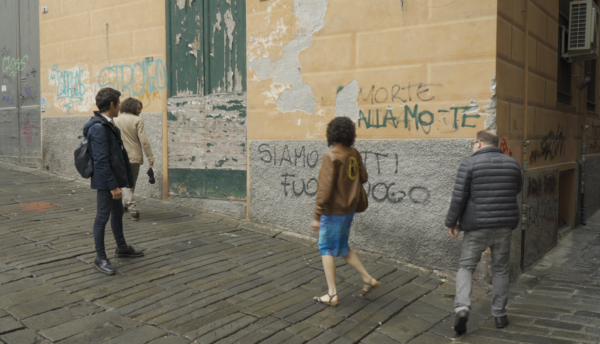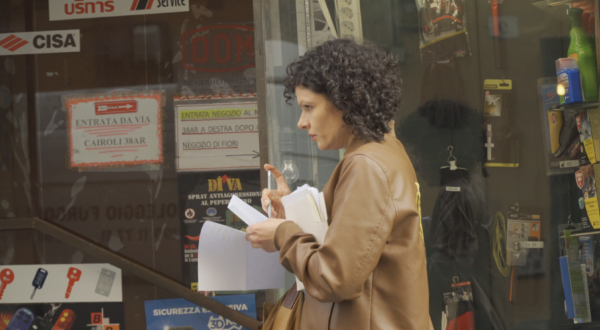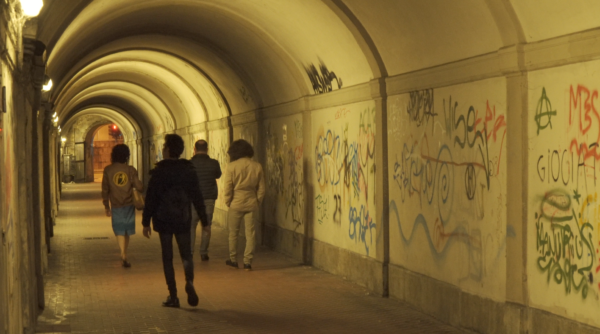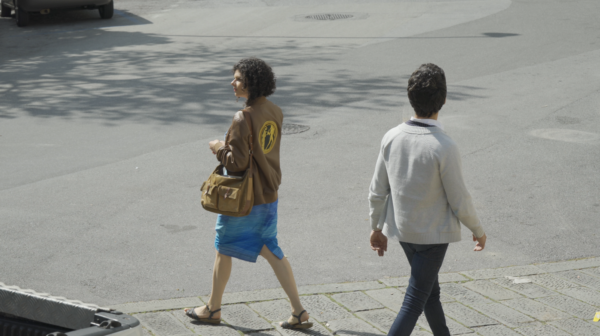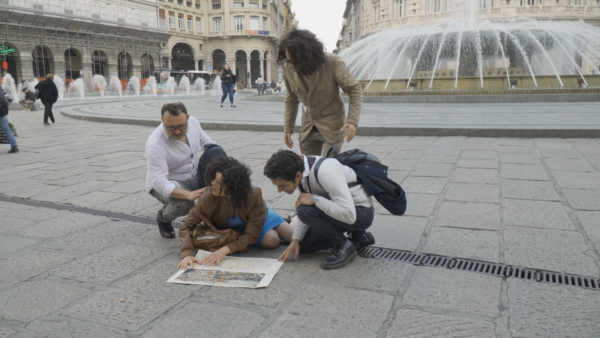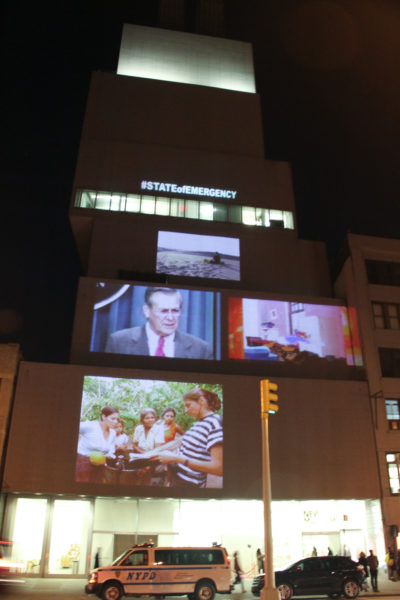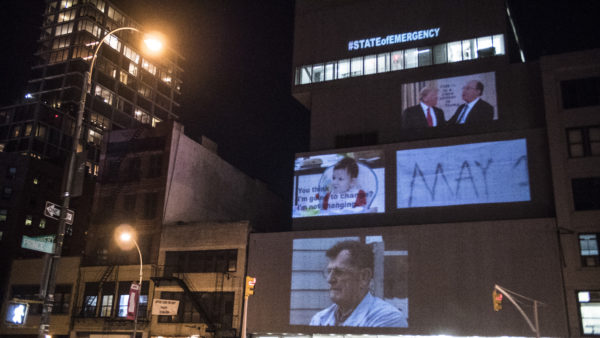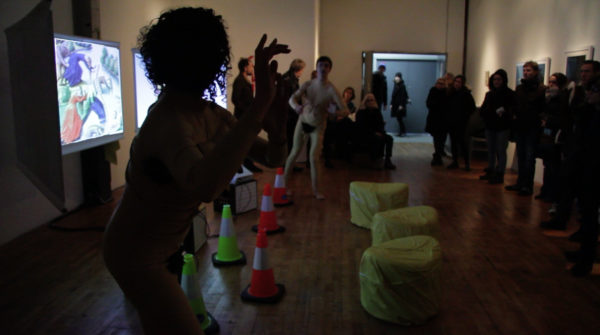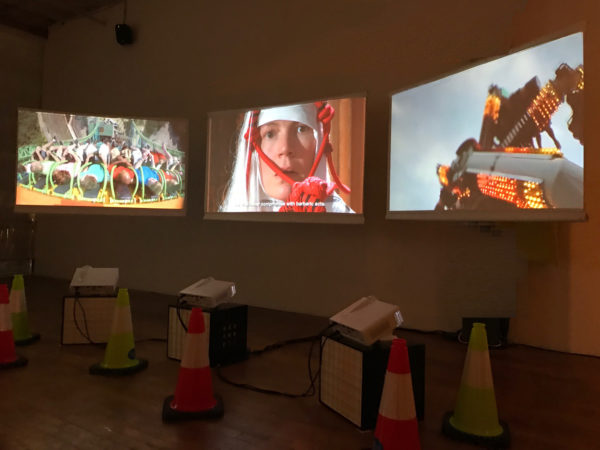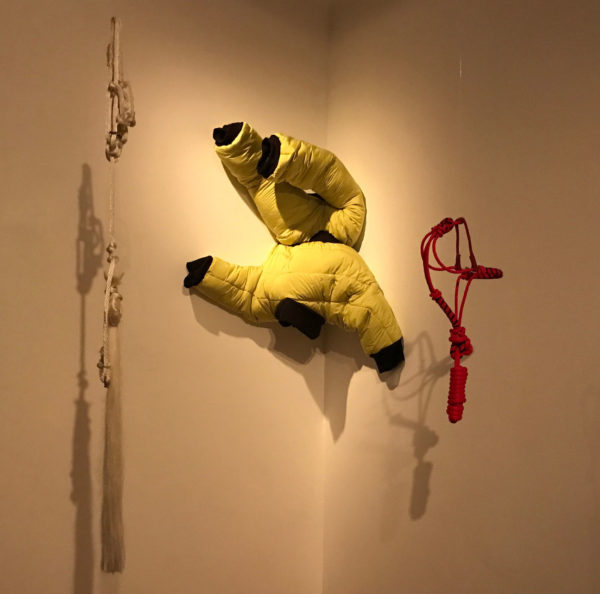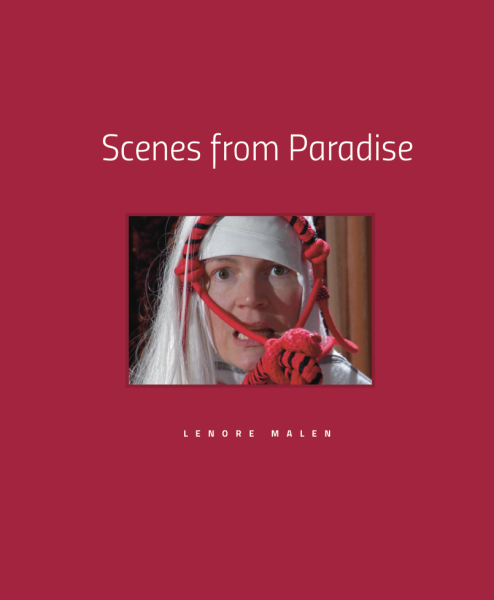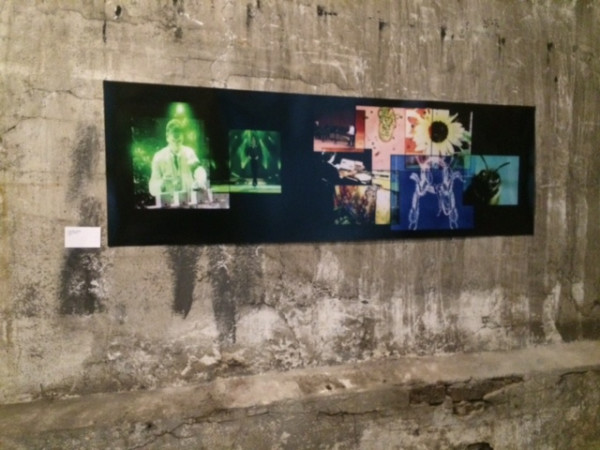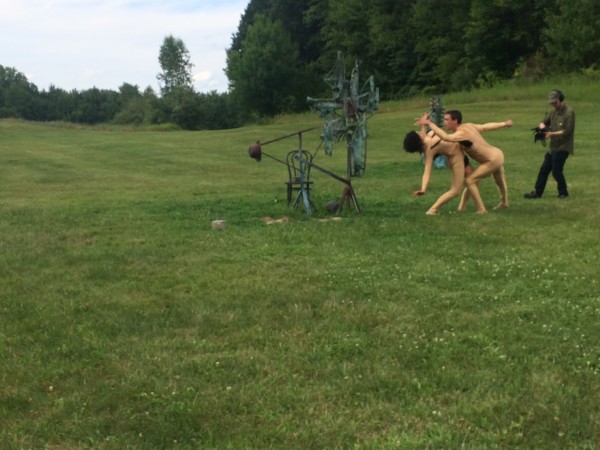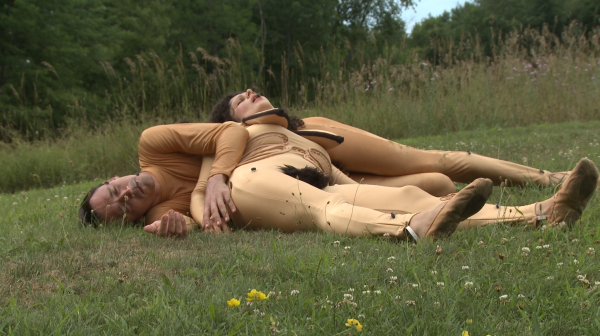News
About
In 1999 I invented the New Society for Universal Harmony (http://thenewsociety.org) and ever since I’ve used the lens of history—and humor—to explore utopian longings, dystopic aftermaths, and the sciences and technologies that inform them. I work with diverse media in all of my projects, incorporating performance, photography, film/video, multi-screen projection, installation and fiction writing. Recently my explorations have focused on ecology, on cultural myths, and on the unstable boundaries between humans and animals. I create narratives around these various forms of life. (Please scroll down and click to page 2 for all projects dating before 2014. )
My utopia page has information about New York politics, activism, and the websites of some utopian friends. I teach in the MFA Fine Arts Program at Parsons The New School For Design. Visit www.lenoremalen.com for further info and archives. View CV Lenore Malen 2017
“Because a thing is going strong now, it need not go strong for ever,” {Margaret} said. “This craze for motion has only set in during the last hundred years. It may be followed by a civilization that won’t be a movement, because it will rest upon the earth. E.M. Foster Howards End (1910)
VIEW FROM MY WINDOW — NOHO, NY
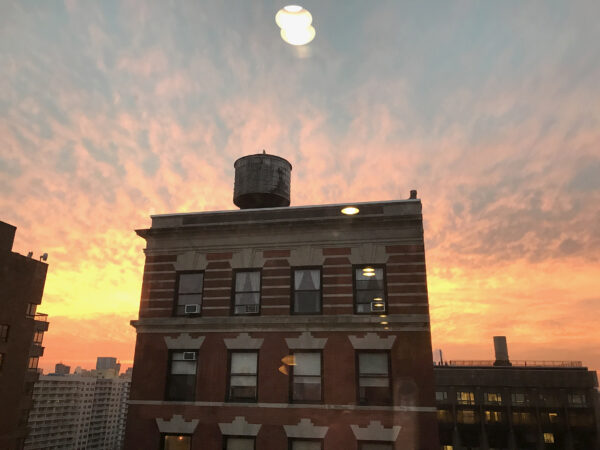
These few words about the future of our planet are taken from the introduction to a panel I organized at the Rubin Museum annex in 2018.
How to Live?
If there’s one thing I want to say it’s this: We mustn’t blame ourselves as individuals for the state we’re in. We’re constantly admonished or told to live less wastefully, less materially, to live differently and this is precisely what the speakers here are doing. It’s critical. It has enormous ramifications. and the speakers here are at the forefront of this. And many people would be very happy to join in a collective effort to change their lifestyle, even radically.
In the past when things got dicey people turned to spiritual traditions, but many of us have not been raised that way — though these traditions are always alive. Today we talk a lot about striking a balance between detachment and radical engagement. It’s what you need to do when you’re in the forefront of social action.
But let’s not forget whose been driving the train ever since the 1980s when the reality of climate change was first introduced into the US Senate. On June 23 l988 climate scientist and director of the NASA Goddard Institute For Space Studies James Hanson told the senate that greenhouse gases had been dectected and were/are changing our climate. 30 years, why on earth haven’t we fixed this?
I just read an interesting small book by French /philosophyer/anthropologist/ sociologist Bruno Latour. It jived with a lot of what I’ve been thinking. I want to put out some of his ideas intermingled with my own. (There are other voices saying much the same thing., T.J. Demos comes to mind.)
The public he says does not fully realize that the issue of climate change denial organizes all politics at the present time.
Latour suggests with a kind of ferocious lucidity that all politics in the West, he states have been organized around the denial of climate change and that the narrative of climate change denial, the systematic effort to deny it’s existence began around the late l980s and he says it that was in lockstep with l990s financial deregulation. He sees deregulation, capital re-appropriation, and climate denial as a single historic situation.
Think for example, of Exxon Mobil in the l990s knowing fully about climate change but massively investing in the frenetic extraction of oil. People in power— in finance, in business, in politics, have heard these warning loud and clear have continued to hear them for very long time.
Whether you believe that this is correlation or causality, regardless, you can’t understand the politics of the last 50 years unless you put climate change and its denial front and center. Latour speaking as a European says that the “ruling classes” stopped purporting to lead and instead began to shelter themselves from the world, from the random hazards of existence. I might put it this way in the west the utopian dream and near belief that all of humanity could benefit materially from industrialization and education and globalization ended during that period for these certain groups. (But it’s also paradoxical because today there is less starvation world wide than before. That’s a different panel.)
Latour talks about the casual complicity of republicans in our congress. Think of their support for climate deniers. And while far fetched could it be that Trump’s urgency to build that wall is also insurance against future migrations during a much warmer period when everyonewill be migrating north. Think, Think we must says Donna Harraway talking about Hannah Arendt and the thoughtlessness of Eichman but in the context of climate change. Now the stakes are higher, even higher if that’s possible.
December 12, 2015, the Paris climate agreement was signed but no one could agree to its terms. On July 1 2017 Trump announced that he would cease all participation in the 2015 Paris agreement because it would undermine the US economy.
Today we are all in migration All of us human and non human animals, find ourselves deprived of land. Nature has become territory. There is no earth capable of sustaining the great acceleration that began after WWII. That’s the bad news.
We need to find a new way, but maybe we can still at the brink. Now there are small signs of something new in Congress. On February 7 2018 we saw the beginning of the Green New Deal, a package of climate change and socioeconomic initiatives. O emissions by 2030, a request for proposals. It’s something, It changes daily, we know seems to be changing almost daily and taking a back seat to this National Emergency we have here. I haven’t been closely following the Ocasio-Cortez — Pelosi power issue but the initiative will survive.
Getting back for a moment to Latour ever the skeptic Latour now decries modernization and globalization and he attempts to dismantle them as ideas. They have failed us, he says. Everything global is very far away, an abstraction, external to the social world, indifferent to human beings. In contrast Latour proposes the term terrestrial, which means the local, the earthbound, but without it’s perjorative, class driven, seperativist connotations.
But actually it’s not so far from Brexit and the irony would not be lost to him. But also think of the defeat of Amazon in Queens.
It’s really, really interesting to me how all this dovetails with recent ideas put forth by Sylvia Federico in her book Reenchanting toe World” Feminism and The Politis of the Commons and with Donna Harraway’s new epoch the Cthulucene, beyond the anthropocene, the capitalocene, Making Kin in the Chthulucene and even Jane Bennett, or so it seems to me. http://opentranscripts.org/transcript/anthropocene-capitalocene-chthulucene and many more.
More than an intellectual intervention or lip service it may be the beginning of a tidal wave of activism that coming to the West.
Leave a commentUppsala Konstmuseum — The Non-Human Animal —Negotiating Bio-relations Sept. 28-Nov. 24, 2019 Uppsala Konstmuseum
Rebecca Digby, Lars Brunström, Eva Klasson och Fredrik Strid (Sverige). Saara Ekström (Finland). Maureen Gruben, (Kanada). Lenore Malen, (USA). Gunnhildur Hauksdóttir, (Island/Danmark)
Here are 2 pictures of my installation Eve in Sheepland followed by the work of several other artists in the show. Please scroll down for more information about this fascinating exhibition curated by Rebecka Wigh-Abramsson and click here. http://uppsalakonstmuseum.se/utstallningar/the-non-human-animal–negotiating-bio-relations/

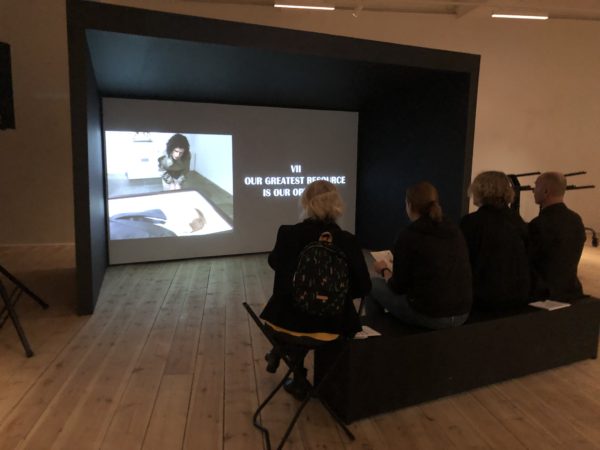
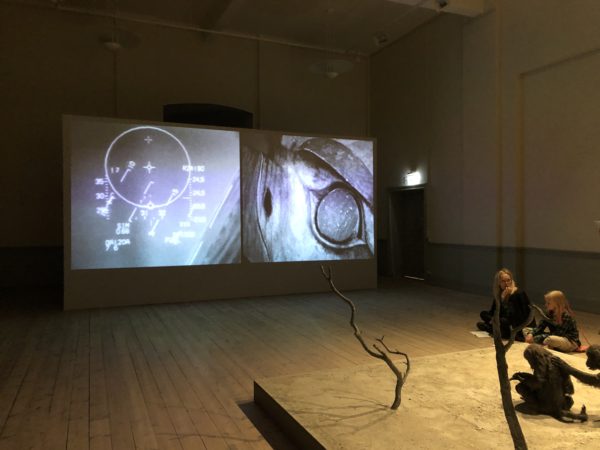
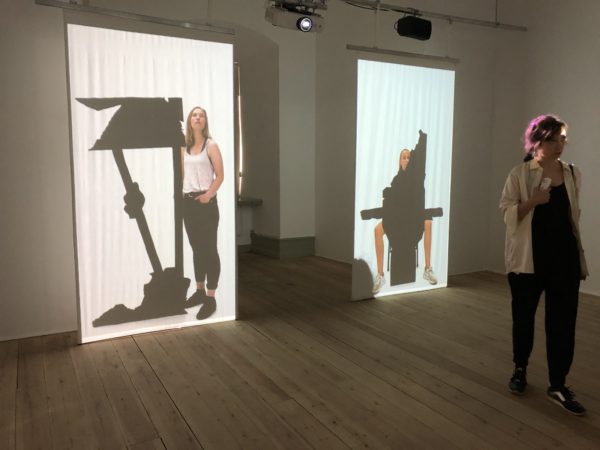
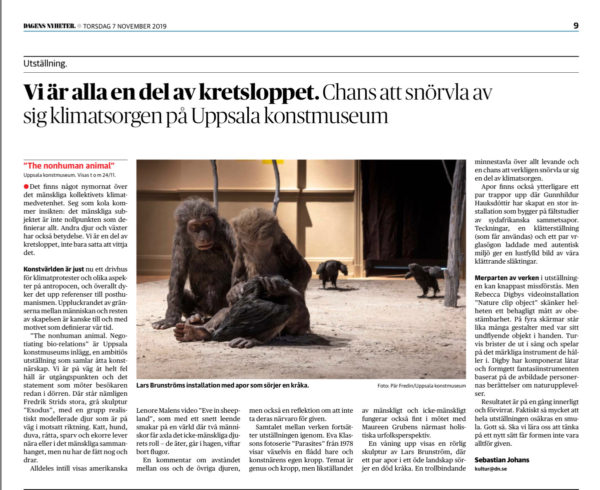
PRESS
Television:: https://www.svt.se/kultur/djuren-blir-manniskans-ideal-i-ny-konstutstallning?cmpid=del%3Afb%3A20191004%3Adjuren-blir-manniskans-ideal-i-ny-konstutstallning%3Anyh%3Alp&fbclid=IwAR2nRQtaP4YcetCMei3rmO9FxS8LUM9JeEXyNk-wgt9uNAcApmDpDUhc_d0
English Press:
https://www.mynewsdesk.com/se/uppsalakonstmuseum/pressreleases/the-non-human-animal-negotiating-bio-relations-exhibition-at-uppsala-art-museum-2924790
Journal
http://cora.se/2019/09/30/angelagna-moten-mellan-konst-och-vetenskap/?fbclid=IwAR0RKLOytQK3PFnWcFv3Nl9ZGMDvp9mJQAW08NuwMtwpVD9NF4obghS5vrQ
The Non-Human Animal Negotiating Bio-relations
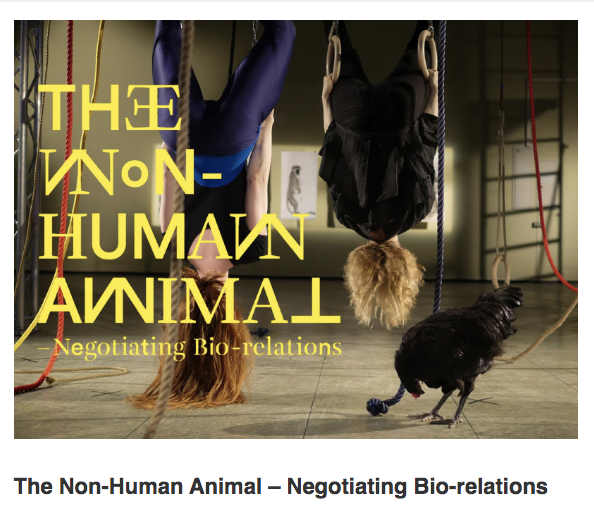
Exhibition / September 28 – November 24 2019
Rebecca Digby (Sweden), Lars Brunström (Sweden), Saara Ekström (Finland), Maureen Gruben (Canada, North West Territoriers), Gunnhildur Hauksdóttir (Iceland/Germany), Eva Klasson (Sweden), Lenore Malen (USA), Fredrik Strid (Sweden)
Eight artists working internationally present sculptures, videos, installations and photographs which in a variety of ways seek to renegotiate the relationship between human beings and other species. The exhibition offers scope for play, empathy and the expression of animalistic emotions, alongside reflections on how the divide between human being and animal is in a constant state of flux. The cultural shift that is emerging in the wake of climate change, and which is already resulting in species extinction and enforced migration, is urging us to enter into genuine ecological interplay.
The project is being in run in association with Zennström professorship in climate change leadership at Uppsala university and researchers specialising in animal studies and biodiversity, along with other participants at Uppsala University and the Swedish University of Agricultural Sciences. It is followed by a series of activities.
Opening and Performance / Saturday, September 28
14.00–15.00 Opening: The Non-Human Animal – Negotiating Bio-relations. Inauguration Speeches: Ian Snowball, Professor in Quaternary Geology and Director of Natural Resources and Sustainable Development. Presentations of the artists.
15.00–15.30 Performance: Gunnhildur Hauksdóttir, Borderline Human – Milk River Valley
Gunnhildur Hauksdóttir travelled with a research team of animal behavioural specialists to the Great Karoo in South Africa to collect observations, interviews, video and audio recordings and drawings of wild Vervet monkey troops that live on the Samara reserve. The dance theorist Noa Eshkol, South African lawyer, naturalist, poet and writer Eugène N. Marais’s story inspires the performative dance lecture. In collaboration with dancer Saga Sigurðardóttir, and influenced by the dance theorist Noa Eshkol, and South African, naturalist, poet and writer Eugène N. Marais’s story, the artists examine and animate the borderline between human and non-human beings.
Program
Sunday September 29, 13.00–16.30
Bio-relations in Uppsala. Researchers walks, mass public art making and talks. Sign up here. Thursday, October 3, 18.00–19.00 Migrants or Co-Habitors? – Animals in the Era of Climate Change Panel talk: Fredrik Strid, Lenore Malen, Erika von Essen, Håkan Tunón, Marie Kvarnström
Thursday, October 17, 18.00–19.00
Learning from Animism – To visualise Significant Otherness. Animals as choreographers, sole mates or decorative props? Panel talk: Jacob Bull, Rebecca Digby, Lars Brunström och Terje Østigård.
Sunday, November 10, 14.00–15.00
Curators guided tour: Rebecka Wigh Abrahamsson, Uppsala Art Museum
Saturday, November 23
Council of beings: The program will be announced later.
Circe, 2020
Circe, 2020
<iframe src=”https://player.vimeo.com/video/358164263″ width=”640″ height=”360″ frameborder=”0″ allow=”autoplay; fullscreen” allowfullscreen></iframe>
Please Scroll Down for Stills
Knowing that I would spend a month in Bogliasco, near the port of Genoa on the Mediterranean in Spring 2019 prompted me to re-read The Odyssey. My new film Circe came out of that recent journey into the past, my love for classical antiquity, and out of conversations with actress Jessica Weinstein.
In this film Circe’s tale is woven into a derive, a 3 day passage through the city of Genoa and into the mountains with a puzzling map. Circe takes the walk with three men she befriends in the Aquarium while lurking around large tanks of aquatic animals.
In Homeric times and earlier Circe’s sexuality was connected to the fertility of animals and plants. In The Odyssey she sleeps with and gives good council to Odysseus while she transforms his men into pigs, later releasing them as better-looking men. Stories about the goddess Circe have been circulating for eons. In The Odyssey she is envisioned as a sorceress with shape shifting powers who lives alone on an island with lions and wolves, relationships glimpsed at in archeological finds of a much earlier period. After Homer she was reinvented in Classical Greece and thereafter as a predatory female. In the past few decades she’s been radically re-envisioned by Margaret Atwood, Toni Morrison and Madeleine Miller.
Circe features actors Jessica Weinstein, Matteo Alfonso, Graziano Siressi and Pablo Tornel. Produced, Written and Directed by Lenore Malen (Cameras: Ruppert Bohle, Lenore Malen)
The entourage reads aloud while they walk, at first from a screenplay by Gary Indiana on dislocation, lost objects, unfamiliar places. Eventually they turn to Book 10 of The Odyssey that they read and re-read, rehearsing for a play while moving through the city.
Circe is a document of a live performance, a comedy and improbable spectacle on the streets of Genoa. The walk is a physical displacement, a move whose makeshift itinerary binds the city voyage to film.
Space, my space . . . is first of all my body. . . it is the shifting intersection between that which touches, penetrates, threatens or benefits my body on the one hand, and all the other bodies on the other. Georges LeFebvre
Film, body, architecture: a haptic dynamics, a phantasmic structure of lived spaced and lived narrative, a narrative space that is intersubjective, for it is a complex of foci-sexual mobilities. Unraveling a sequence of views, the architectural-filmic ensemble writes concrete maps. The scope of the view—the horizon of site-seeing—is the mapping of tangible sites. Elizabeth Grosz
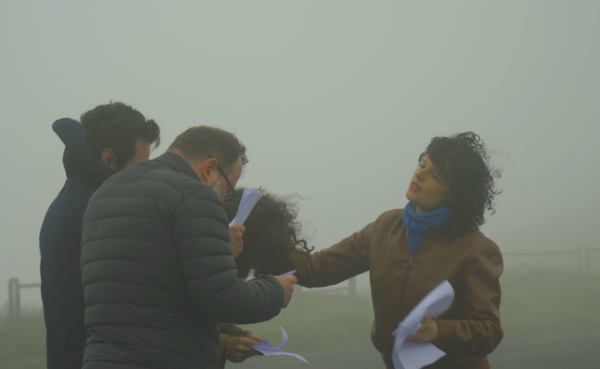
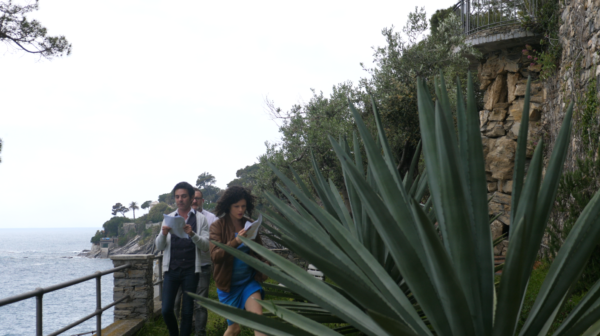
State of Emergency
State of Emergency is a curatorial project featuring the work of 60 artists and filmmakers that I’ve been working on with Nina Felshin since March 2017. Our collaborators have included Jessie English and Ruppert Bohle and most recently The Illuminator http://theilluminator.org/and Eamonn Farrell http://arts.princeton.edu/people/profiles/efarrell. Teasers for this project were screened at The Queens Museum in July 2017 http://www.queensmuseum.org/events/passport-thursdays-2017-ecuadorand projected onto a facade at the corner of Prince and Bowery on November 16th 2017.
- state of emergency a situation of national danger or disaster in which a government suspends normal constitutional procedures in order to regain control.
STATE OF EMERGENCY
A madman steps out of a television screen to become President of the United States. His abuse of power and disregard for civil and human rights has produced what feels to many like a state of emergency. Unlike his predecessors, who were able to lull the un-marginalized, the new regime has penetrated the comfort zones of the privileged as well. Could this seismic shift perhaps offer the potential for greater solidarity and community?
The outcome of this crisis is still unknown. We are turning to artists and filmmakers because so often they have provided a lens through which to understand the present and imagine the future. Rather than a single narrative we view this collective effort as a metaphor, not an illustration, of what is possible. To this end we are seeking one-minute clips from existing videos which envision an imagined future and poetically undermine the harsh reality of this moment.
For us, the curators, projection designer, and production manager, bringing these clips together in a creative, poetic, and resonant manner is an act of community and solidarity.
Leave a comment
Scenes From Paradise at Studio10
Emergent Ecologies— curated by Eben Kirksey April/May 2016
An exhibit that I am very pleased to have participated in. April 30- May 21, 2016 http://www.multispecies-salon.org/emergence/
Emergent ecologies are being fastened into place with new rivets and cyborg articulations. Amidst collapsing systems, unruly assemblages are flourishing and proliferating in unexpected places. Microbes that become emergent diseases—by finding novel exploits, pathways of transmission, or modes of existence—can quickly transform dominant political strategies, economic systems, or agricultural practices. Emergences can also figure into collective hopes. When a forest is clear-cut by loggers or destroyed by a volcanic eruption, emergent plants are the first to sprout.
Rather than be a static exhibit, that will stay the same from the opening and closing dates, our project will involve playing with the “hap” of what happens. Happiness, in the Old English sense of the word, means having “good hap” or fortune. We will be conducting experiments with happiness and glass, breaking down boundaries (and constructing new ones) to see what ecological communities might emerge.
Emergent Ecologies features bioart installations, living sculptures, paintings, photographs, and digital media. Kilroy will be open to the public during a series of events and weekend gallery hours.
Leave a commentThe Fields at Art Omi — July 16, 2016
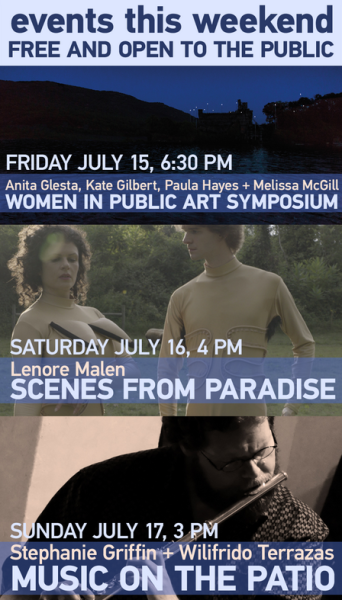 A restaging of my film “Scenes from Paradise” at Art Omi on Saturday July 16th, 2016. With Jessica Weinstein as Eve and Blake Habermann as Adam — and Dan Devine. Crew: Catherine Mctague and Joel Olzak.
A restaging of my film “Scenes from Paradise” at Art Omi on Saturday July 16th, 2016. With Jessica Weinstein as Eve and Blake Habermann as Adam — and Dan Devine. Crew: Catherine Mctague and Joel Olzak.
Leave a comment
Lenore Malen Presentation Text
Eve in Sheepland is a dark comedy in 9 short scenes inspired by a medieval manuscript illumination of Eden discovered on the Internet. It was filmed as a live, unscripted performance on a sheep farm in New York State (US) in 2015 and completed this year. Two characters Eve and Adam, time travelers, find themselves on the farm. Naked and unashamed, befuddled and doomed they interact with the sheep, they learn to be human and they die. Together the scenes reveal the sheep’s bodily sense of vulnerability (and panic) as well as their profound knowledge of earth and death that we humans find too much to bear. The film explores our current ecological catastrophe through the lens of history and myth touching on the paradox of the biblical earthly utopia Eden and what that myth darkly foretold. Dominion, expulsion, aren’t these the very tropes that define our ties to planet earth? Eve was inspired by Derrida’s L’Animal que donc je suis (ti suivre), that begins at the beginning with the curious tale of Genesis, with nudity and shame and the question of the animal.
Leave a commentRomanov Grave on Scenes From Paradise — Sept 15, 2015
The critical blog romanovgrave.com/studio-visits/lenore-malen recently posted an essay on Scenes From Paradise: a series of 3 channel videos and a film (2016). Their essay ranged widely from politics to film and expands greatly on previously written posts on this site. A still from the film is shown here. (The web version of the essay (see link above) has numerous pictures that illuminate the text.)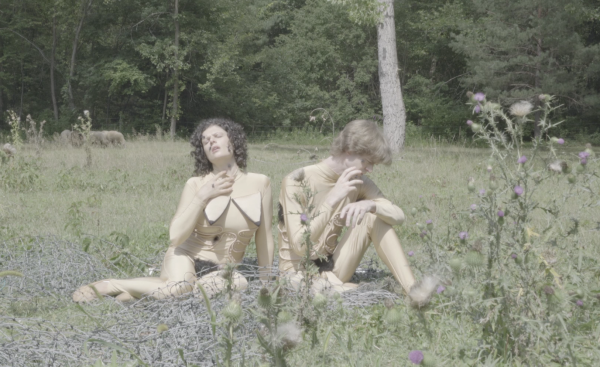
New York City, Central Park. Four animals, a horse, a goat, a lion and perhaps a Dalmatian, make their way as a team, seeming to rappel without ropes, across a rocky outcrop of 450 million year old schist rock. The blocking of the figures evokes the dance of death scene from Bergman’s The Seventh Seal. The pinstripe skyscrapers in rear bring to mind Hitchcock’s North by Northwest. The setting, Central Park, deploys, tragically, Olmsted’s culture performed as nature. We would do well to remember that Bergman staged his opus as a chess game between a returning crusader and the figure of Death as the bubonic plague ravaged Europe; that Hitchcock invented for his film a compass point that simply does not exist, while, with Olmstead, nature is nothing more than an echo of an anthropomorphized projection. As we sift and connect these dots, as we do for the above the very messy calculus we all know this will not turn out well. An end game is in at hand.
Approached in medias res in the studio this is an initial take on Lenore Malen’s current project, a multi layered and multi part film project titled Scenes From Paradise. Screened for us by the artist in her studio, provisionally arranged as a three-monitor installation, the work unconsciously, unknowingly, came to resemble the three altars of a place of Catholic worship. (Maybe prayer can save us, but we have our doubts.) The entire project has evolved over the past two and a half years out of Malen’s chance discovery, as she browsed the web, of a medieval manuscript illumination. The artist of that illumination, The Maître Francois, worked in the service of The Duke of Nemours, producing the rarified knowledge of the less literate, but in its own way knowledge filled, 15th century. Continue Reading
Leave a comment
